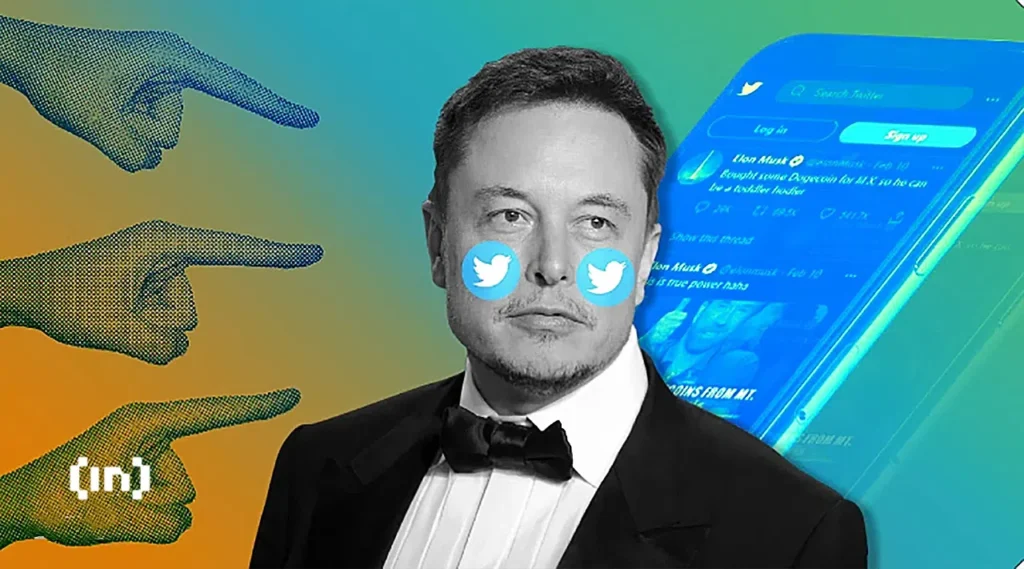Billionaire entrepreneur and Dogecoin fan Elon Musk has told investors that he plans to complete his $44 billion purchase of Twitter on Friday.
The confirmation came in a call with banks that included Morgan Stanley, Bank of America, and Barclays, who have each pledged $2.5 billion in loans for Musk’s takeover.
In total, Musk’s seven banking partners have promised around $13 billion according to reports in Bloomberg on Monday.
Binance is another major investor in the takeover, having pledged $500 million to the deal. Other Twitter investors backing Musk include the Qatar Investment Authority and the venture capital firm Sequoia Capital, which has a strong track record of blockchain investments and cryptocurrency advocacy.
Cryptocurrency and Twitter
Twitter is a social media stronghold for crypto proponents, even spawning the commonly understood abbreviation of “CT” which stands for “Crypto Twitter.”
As the gathering place for some of the most prominent voices in the industry, Musk’s takeover is of interest to the community by default.
That interest only increases when coupled with Musk’s personal penchant for Dogecoin (DOGE). Add financial backing from within the industry into the mix, and there emerges a pretty compelling narrative as to why CT should watch developments with interest.
What Does Musk Plan for Twitter?
Musk has made no secret of his plans to overhaul the social media site, and remake the platform in his own image. The outspoken provocateur has previously described himself as a “free speech absolutist,” suggesting a reduction in demand for moderation staff. Musk has also polled Twitter users about the possibility of changes to the platform which may include an edit button.
During a TED Talk in April, Musk opined that Twitter should become a platform for free speech.
“I think it’s very important for there to be an inclusive arena for free speech,” said Musk. “Twitter has become the de facto town square.”
Twitter moderation staff have long suspected their jobs would be at risk in Musk’s Twitter. A report in The Washington Post on Oct. 20 confirmed that his plans are far more drastic than previously understood.
It is now believed that Musk plans to slash Twitter’s 7,500-strong workforce by 75%, leaving only a skeleton staff of around 2,000.
With such a vastly reduced workforce questions emerge whether Musk will be able to resolve Twitter’s longstanding issues.
Twitter and Its Big Bot Problem
It is little secret that one of the most pernicious problems with Twitter is bots. Musk himself cited the issue as a reason for pulling out of the deal, before eventually changing his mind (again).
As previously reported by BeInCrypto, Musk finds scam bots endemic and of particular annoyance.
“They [scam bots] make the product much worse. If I had a Dogecoin for every crypto scam I saw, we’d have 100 billion Dogecoin,” said Musk.
The followers of major crypto personalities such as Binance chief Changpeng Zhao (CZ) are regularly targeted by scammers. Any post by CZ tends to be inundated with numerous scam replies, and he is not alone. One Twitter post by Bitcoin maximalist Jimmy Song recently had as many as 40 bot responses within the first minute.
The question is whether Musk can tackle Twitter’s bot issues while cutting staff costs.
Elon Musk Really Loves Dogecoin
Elon loves Dogecoin and as recently as May of this year touted its potential as a currency.
At one point Musk even considered incorporating Dogecoin into the Twitter ecosystem. This became public knowledge during the discovery phase of his recent legal battle with Twitter.
“I have an idea for a blockchain social media system that does both payments and short text messages/links like twitter,” said Musk in a message reported by TechCrunch in Sept. “You have to pay a tiny amount to register your message on the chain, which will cut out the vast majority of spam and bots. There is no throat to choke, so free speech is guaranteed.”
In a message to Steve Davis, the president of The Boring Company, Musk considered a second option.
“My Plan B is a blockchain-based version of Twitter, where the ‘tweets’ are embedded in the transaction of comments. So you’d have to pay maybe 0.1 Doge per comment or repost of that comment,” said Musk.
Musk later abandoned the plan as unworkable, but perhaps there are other ways that Musk could seek to incorporate his favorite crypto into the platform.
A premium version of Twitter could be one way to do this, as could a tipping mechanism. At this stage, there is nothing to suggest that either such option is being seriously considered.
The difficult History Between Crypto and Social Media
Crypto has not always enjoyed an overly friendly relationship with social media sites.
In 2019 Facebook placed a blanket ban on all crypto advertising, while YouTube has been known to ban or block influencers even including Anthony Pompliano whose content they labeled “harmful and dangerous.”
Both sites seem to have refined their stance more recently, but it outlines the historic difficulties that crypto has faced.
With a Dogecoin-friendly Musk controlling Twitter (with a little help from industry insiders) proponents may hope for a better attitude toward the community as a whole. Whether that optimism of expectation matches the reality is another matter entirely.
Disclaimer
All the information contained on our website is published in good faith and for general information purposes only. Any action the reader takes upon the information found on our website is strictly at their own risk.


